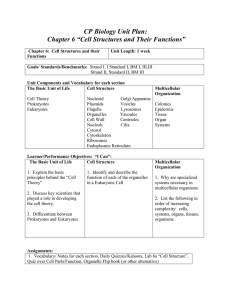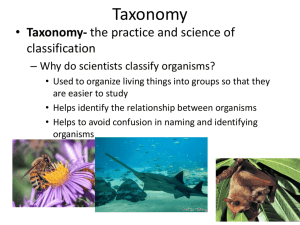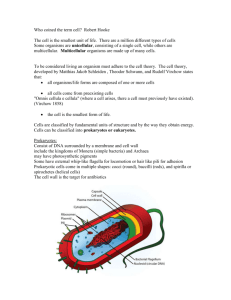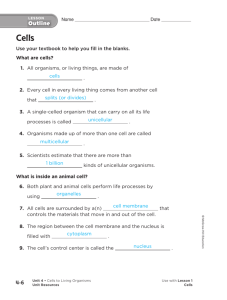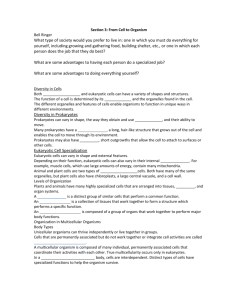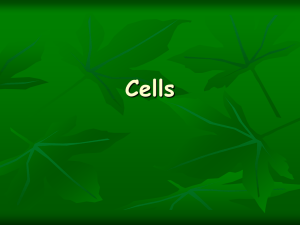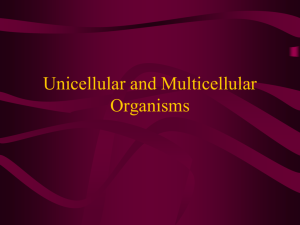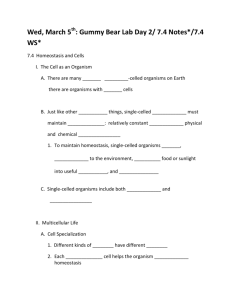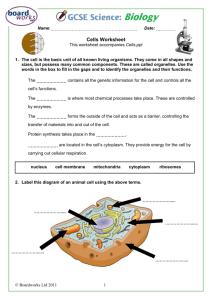Chp 2 Study Guide
advertisement
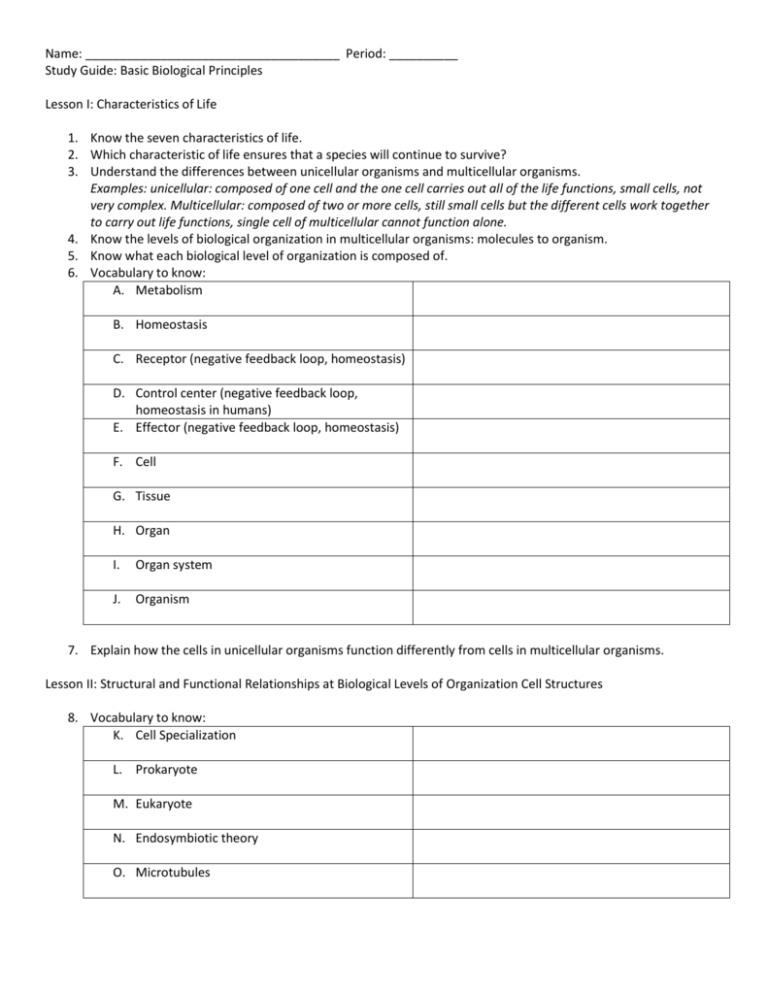
Name: _____________________________________ Period: __________ Study Guide: Basic Biological Principles Lesson I: Characteristics of Life 1. Know the seven characteristics of life. 2. Which characteristic of life ensures that a species will continue to survive? 3. Understand the differences between unicellular organisms and multicellular organisms. Examples: unicellular: composed of one cell and the one cell carries out all of the life functions, small cells, not very complex. Multicellular: composed of two or more cells, still small cells but the different cells work together to carry out life functions, single cell of multicellular cannot function alone. 4. Know the levels of biological organization in multicellular organisms: molecules to organism. 5. Know what each biological level of organization is composed of. 6. Vocabulary to know: A. Metabolism B. Homeostasis C. Receptor (negative feedback loop, homeostasis) D. Control center (negative feedback loop, homeostasis in humans) E. Effector (negative feedback loop, homeostasis) F. Cell G. Tissue H. Organ I. Organ system J. Organism 7. Explain how the cells in unicellular organisms function differently from cells in multicellular organisms. Lesson II: Structural and Functional Relationships at Biological Levels of Organization Cell Structures 8. Vocabulary to know: K. Cell Specialization L. Prokaryote M. Eukaryote N. Endosymbiotic theory O. Microtubules 9. What are the four parts that all cells have in common? 10. Know the functions of the following organelles and where they are located in the cell: a. Plasma membrane (cell membrane) b. Cell wall c. Nucleus d. Nucleolus e. Cytoskeleton f. Ribosomes g. Mitochondria h. Rough endoplasmic reticulum i. Smooth endoplasmic reticulum j. Golgi apparatus k. Lysosomes l. Central vacuole m. Plastids 11. Know what cilia and flagella are composed of. 12. Know how prokaryotes and eukaryotes are similar and how they are different. Also know what types of organisms are prokaryotes or eukaryotes. 13. Know how viruses reproduce. Are they living organisms???? 14. Be able to trace the pathway of how proteins go from the nucleus and out of the cell, be able to name the three main organelles involved in the pathway. 15. Know the functions of the following human body systems: muscular, nervous, endocrine, and skeletal. 16. Know the structure of a nucleus, and the function of each of its three main parts. 17. Know the three organelles found only in plants and their functions. 18. Use the endosymbiotic theory to explain how eukaryotes are believed to be evolutionarily connected to prokaryotes. THE TEST HAS 11 ESSAY QUESTIONS ON IT WORTH A TOTAL OF 62 POINTS.
